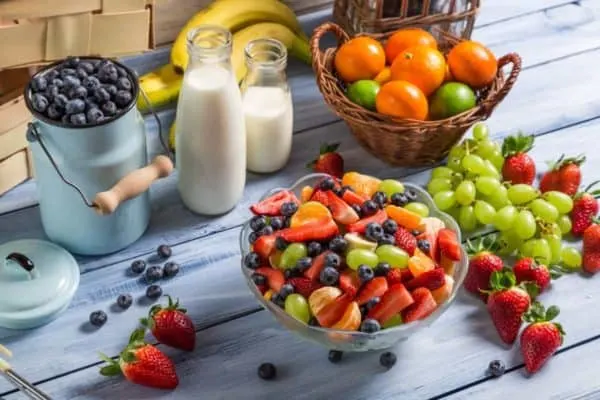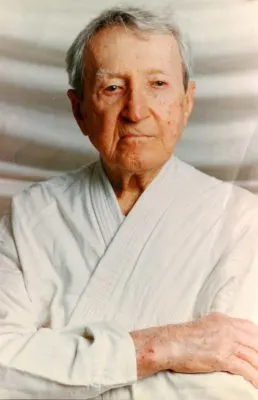
There are many diets out there, all claiming to be the best at keeping your weight down. If you’ve heard of the Gracie Diet, you probably know that it’s not like a normal diet. To the Gracie family, dieting seems to be a way of life. Members of the Gracie family are healthy and full of life and seem to have the same fascination with watermelon juice. If your curiosity has led you here, this article outlines the basic principles of the Gracie Diet in a way that is easy to understand.
The Gracie Diet involves mixing foods from six categories in a way that reduces fermentation and maintains a balanced pH. Pork is prohibited, alcohol and tobacco are discouraged and meals are consumed 4.5 hours apart for digestion. Benefits include better short and long-term health and weight loss.
There is so much more to the Gracie Diet than can be explained above. Below you will find a detailed summary of what this diet involves, including how it works with Jiu-Jitsu training.
Gracie Diet Explained

The Gracie Diet was developed by Carlos Gracie Sr., one of the co-founders of Brazilian Jiu-Jitsu. It primarily outlines which foods can be eaten together by categorizing them into six different groups. These categories are outlined below. The diet also outlines how often you should eat, including some periods of fasting, which I will explain further down.
Gracie Food Categories
- Group A: Vegetables, greens, fats, oily foods, meats and seafood.
- Group B: Starches and Flour. For example, Oats, Pearl barley, Corn flour, Potato, Rice, Rye, Soybean, Wheat, Macaroni and Lentils.
- Group C: Sweet fruits/foods, fresh and creamy cheeses.
- Group D: Acidic fruits.
- Group E: Raw bananas.
- Group F: Milk.
This range of foods does not include pork, which is prohibited in the Gracie Diet. The diet also discourages the consumption of alcohol and tobacco. The foods that are able to be consumed focus on balancing pH levels, making the overall meal as neutral as possible. This means that some groups of foods cannot be eaten with others. These rules are detailed below.
- Group A: Combine together and with foods from Group B.
- Group B: Do not combine together. Combine with groups A, C or F.
- Group C: Combine together and with foods from Group B.
- Group D: Do not combine together or with any other group.
- Group E: Combine with Group F (milk) and selected foods from Group C. Do not combine with groups A, B and some of Group C.
- Group F: Combine with Group B and selected foods from Group C. Do not combine with Group A and some of Group C.
The Purpose of Gracie Diet
The Gracie Diet is designed to improve your quality of life by maintaining a healthy body over a lifetime. The combination of foods mentioned above promotes easy and effective digestion, reducing acidity and fermentation in the digestive tract. It also minimizes the amount of toxins that enter our bodies through poor eating or unknowingly consuming chemicals from the production process.
The Gracie Diet was used to supplement medicine with healthy eating. It was designed to keep the body strong and healthy at all times so that the Gracie family could defend their family’s honor in a fight at any given time. This diet was refined over 65 years and tested on Carlos’ own children and grandchildren, with great results. Carlos’ descendants thrive today and have maintained their family legacy of some of the best fighters in the world.
Gracie Diet Benefits
The benefits of the Gracie Diet relate to your long-term health. Growing up, Rorion Gracie was told that following the Gracie diet would pay off after he turned 50 years old. Once he surpassed this age, he noticed that he was free from most of the health concerns of others his age and that his energy levels allowed him to do the physical activities he used to do in his 20’s.
Rorion followed the Gracie diet from a young age, showing its benefits in preventing many diseases. The theory behind this is that the digestive imbalances and consumption of trace toxins in our food build up over many years, contributing to common ‘age-related’ diseases. By minimizing these toxins and bad reactions, their effects don’t accumulate as we age and we are healthier in the long term.
In addition to this, the Gracie Diet has also been known to reverse poor health. One example that is shared in the Gracie Diet book involves a head physician, who had been suffering from a bad ulcer, being convinced by Carlos Gracie to try the diet. He was scheduled for surgery and allowed Carlos to take charge of his diet in the meantime. Within two weeks, the ulcer had completely healed.
The Gracie Diet can also help with weight loss. The consumption of healthy foods naturally reduces the ratio of body fats. However, in order to actively lose weight on the Gracie Diet, calorie counting and being active is recommended to burn more energy than you consume.
How to Follow Gracie Diet
Preparing Your Food
Preparation of your food makes a big difference in how many toxins enter your body through your diet. The Gracie Diet recommends washing your hands before every meal, thoroughly washing all fruits and vegetables before they are consumed and peeling any fruits that may contain pesticides in their skin.
When to Eat
If you follow the Gracie Diet, you should aim to eat three meals every day. These meals should be spaced out by at least 4.5 hours to allow the stomach to fully empty before the next meal. The theory behind this is that the digestive tract needs time to rest between meals and constantly introducing foods increases the chance of poor chemical reactions.
The Gracie diet also promotes fasting for one day every month. This is mostly recommended for people over 40 years old, but can be performed by anyone to help cleanse the body.
In regard to portion sizes, it is recommended that you eat until you are approximately 80% full. This allows you to enjoy your food without over-filling yourself. Sometimes it takes a while for our bodies to register that they are full and satisfied.
What to Drink
Between meals, you should only drink plain water or coconut water as these are not counted as a food group. However, during mealtimes, you can drink anything that adheres to the Gracie food combinations. Below are drinks that can be consumed during mealtimes and which category they fall under.
- Vegetable Juice: Group A
- Sweet Fruit Juice: Group C
- Tea: Group C
- Milk : Group F
- Banana Smoothie: Groups E and F
- Acidic Fruit Juice: Group D
- Water and coconut water (can be consumed anytime)
Keep in mind that acidic fruits cannot be consumed with any other food. They cannot even be consumed with another acidic fruit. Therefore, eating an acidic fruit or having acidic fruit juice (such as orange juice) will be the only thing you can eat for that meal. You would also need a lot of the same fruit to feel full.
All other drinks can be consumed with a decent meal. For example, vegetable juice can be consumed with meats, fats and starches. Therefore, vegetable juice might be a good option for larger meals where you can consume carbohydrates, fats and protein.
However, the safest drinking option is water and coconut water, as I mentioned above. These do not restrict what you can eat with them and therefore you have more options for your meals.
What Should I Eat Before Jiu-Jitsu Training?
The Gracie Diet was designed to “ensure that all family members were ready to uphold the Gracie name in an unarmed fight with anyone, anywhere, and at any time.” (The Gracie Diet, p. vi). For this reason, if you follow the Gracie Diet, your body will be prepared for Jiu-Jitsu training at any time. It should have an abundance of nutrients and energy available to get you through the lesson.
With that said, the timing of your meals is something that you should consider. Healthline (link to website) recommends waiting 1-2 hours before exercising after a main meal. This is because most people experience stomach upset if they exercise on a full stomach.
The Gracie Diet recommends spacing your meals out by 4.5 hours. Therefore, if you eat two hours before a one-hour training session, you can eat your next meal 1.5hours after the session. This is a good amount of time to cool down, have a shower and get changed before your meal.
This spacing will allow you to have enough energy, while also reducing your chances of having an upset stomach during training. The type of meal you have is entirely up to you, provided you stick to the Gracie recommendations for food combinations.
What Should I Drink Before BJJ?
It is important to have enough energy for BJJ training. However, unless you are eating a meal, the Gracie Diet only allows water or coconut water between meals. If you follow the recommendations above and eat 1-2 hours before training, you will be limited to these two options.
Of the two, coconut water is the better choice for before and after exercise. Not only does coconut water hydrate you, but it also contains a number of essential nutrients. According to Healthline (link to website), you will receive the following nutrients in every cup of coconut water.
- 9g of carbohydrates
- 3g of fibre
- 2g of protein
- 10% of your recommended daily intake (RDI) for Vitamin C
- 15% of your RDI for magnesium
- 17% of your RDI for manganese
- 17% of your RDI for potassium
- 11% of your RDI for sodium
- 6% of your RDI for calcium
How Do I Recover From Jiu Jitsu
Recovering from Jiu-Jitsu requires you to stretch, stay hydrated and replenish your energy stores. On the Gracie Diet, this involves drinking water or coconut water immediately after the training session. Coconut water will provide more nutrients to replenish your body, so is a good option after your session.
However, if you are following the recommended guidelines above, you will be ready for another main meal within 1.5 hours of finishing the Jiu-Jitsu session. This means that your energy and nutrient stores will be replaced soon anyway, so drinking plain water is also fine.
